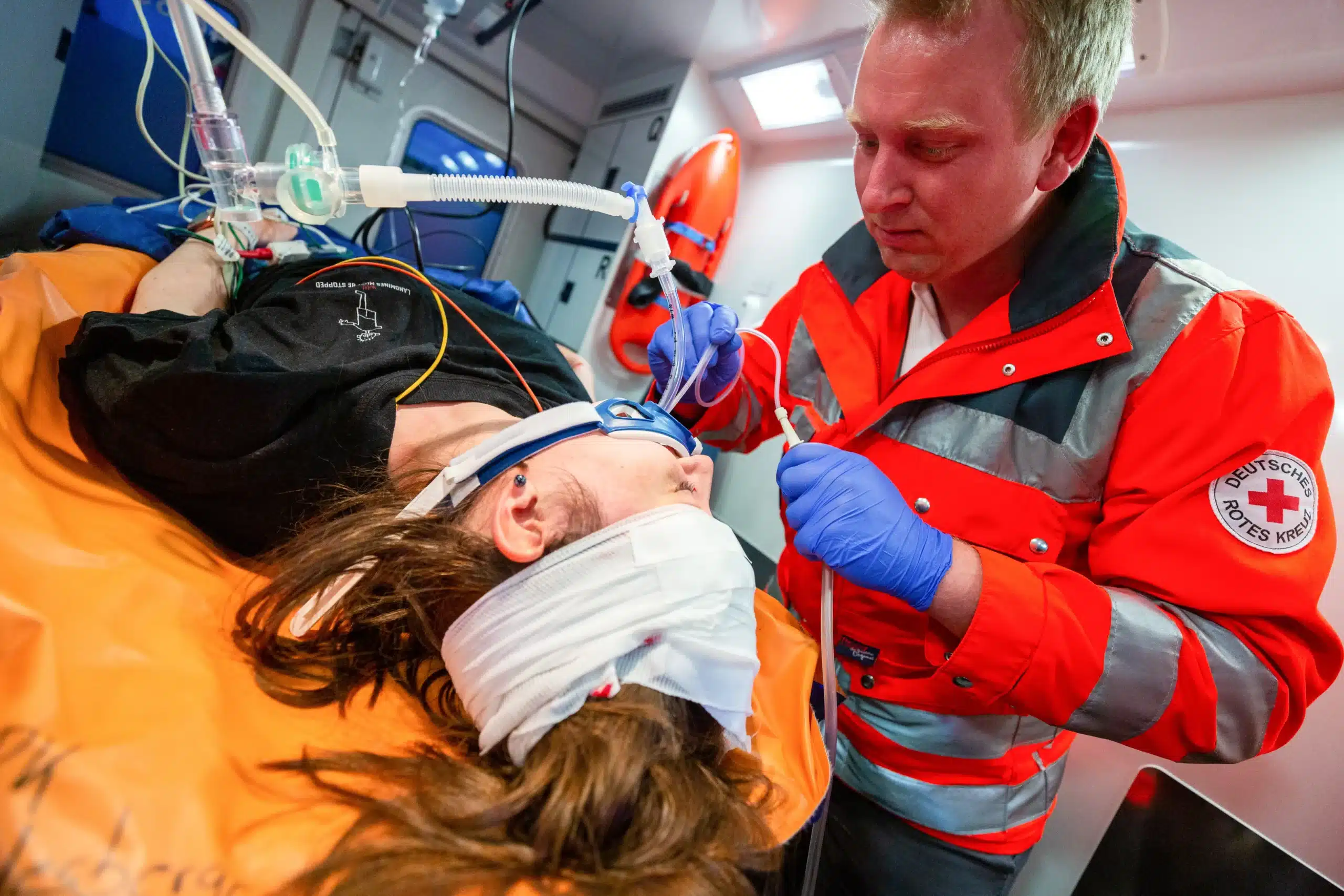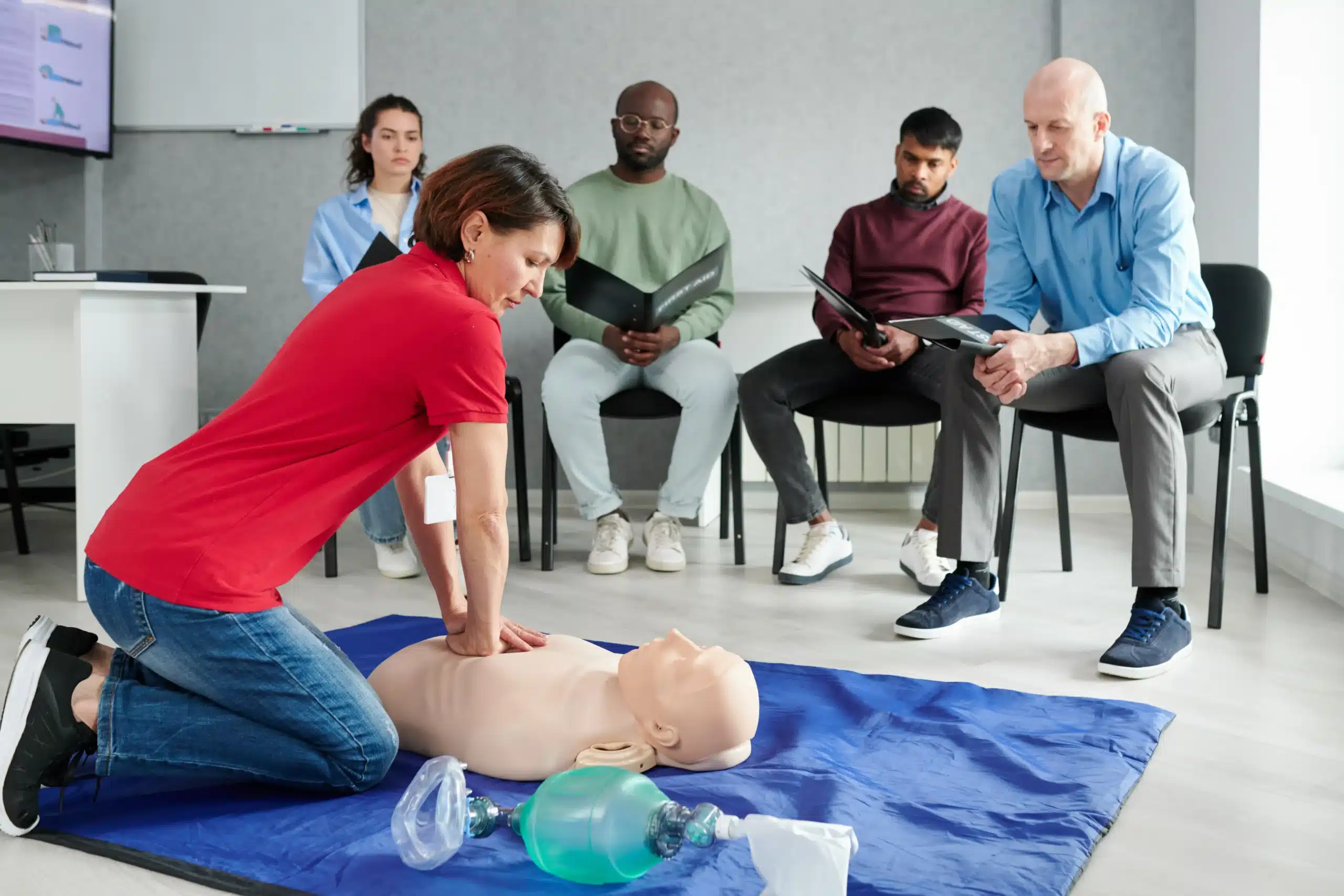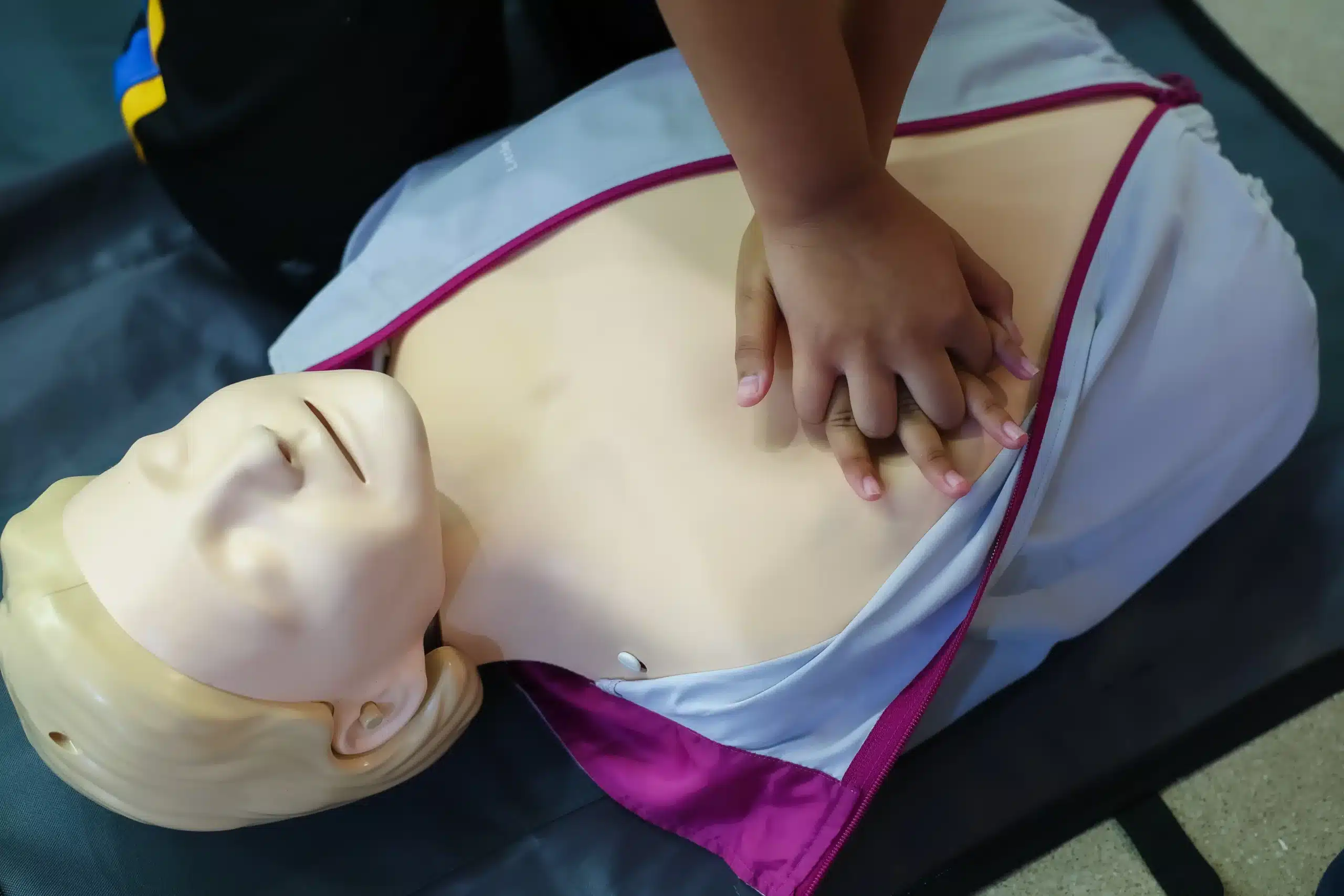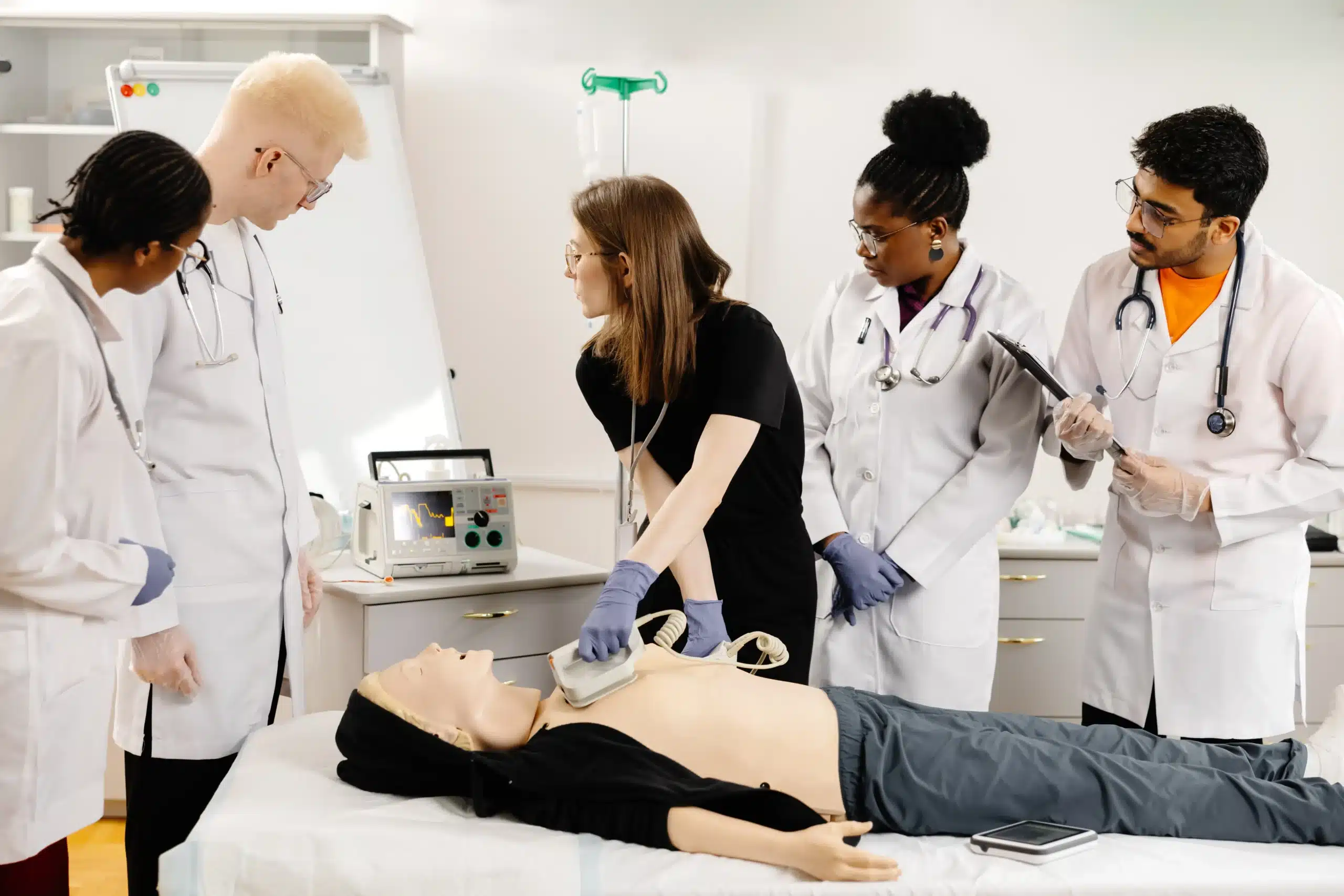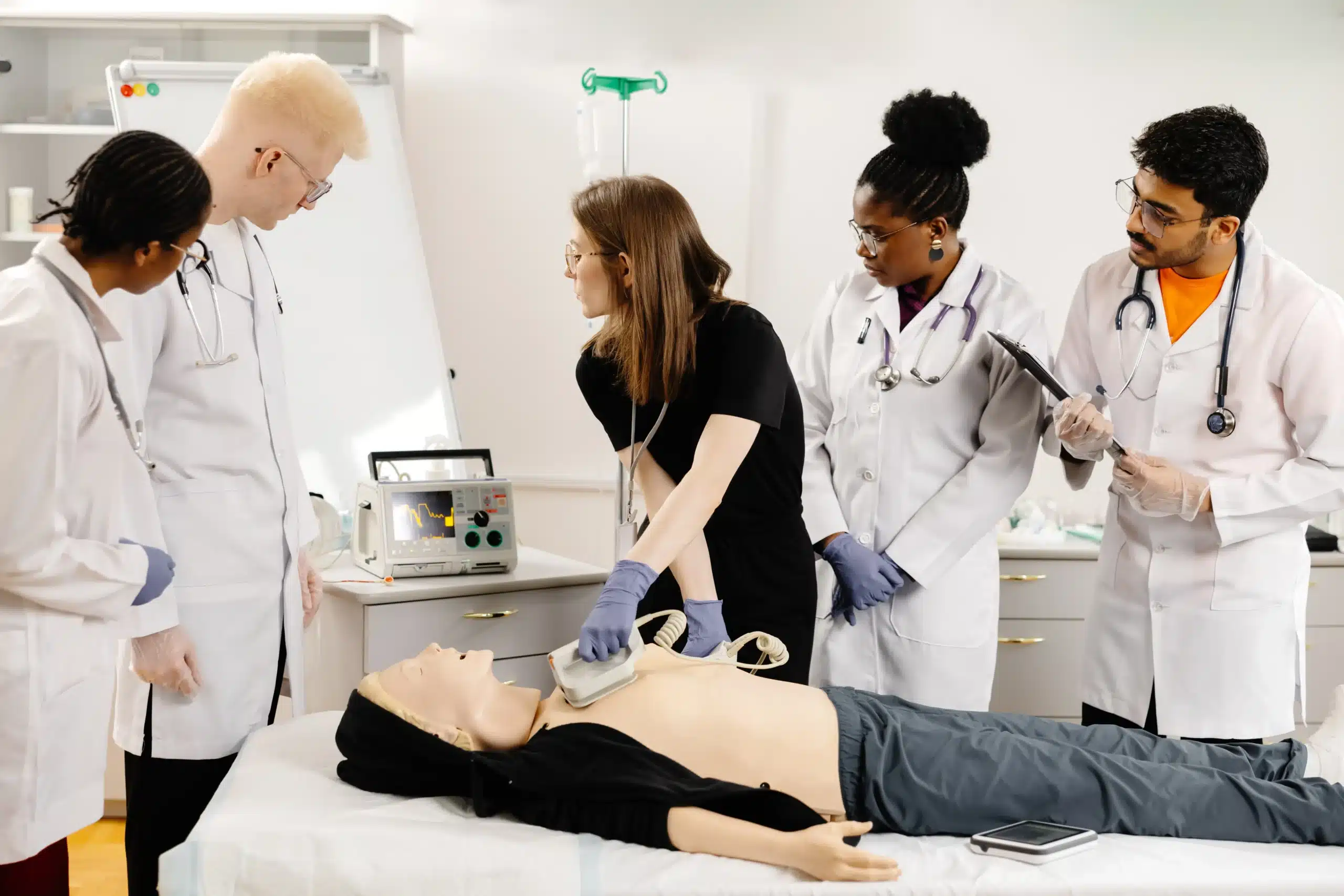In the realm of healthcare and emergency response, staying current with your certifications isn’t just a formality—it’s a commitment to excellence and a responsibility to those in your care. BLS certification, your essential toolkit of life-saving skills, requires regular upkeep. If your BLS card is nearing its expiration date or you’re simply searching for “BLS recertification near me,” you’re in the right place. This guide will walk you through the process of finding the perfect recertification course, understanding the latest guidelines, and ensuring you’re always prepared to respond effectively in critical situations. Let’s explore how you can keep your life-saving skills sharp and your certification current.
Key Takeaways
- Maintain your life-saving skills by staying current with your BLS recertification. Regularly refreshing your skills ensures you’re prepared to respond effectively in emergencies and demonstrates your commitment to high-quality care.
- Choose the right BLS recertification course by considering your learning style and needs. Explore different learning formats, compare providers, and factor in costs and scheduling to find the best fit.
- Manage your BLS recertification proactively by marking your renewal date and utilizing available resources. Digital certification and ongoing training materials can simplify the renewal process and help you maintain your skills between recertifications.
What is BLS Recertification?
What is BLS & Why Recertify?
Basic Life Support (BLS) certification gives you the skills to respond to medical emergencies, including CPR, using an AED, and relieving choking. It’s a foundational requirement for many healthcare roles, enabling professionals to provide immediate care in critical situations. Think of it as your toolkit for saving lives. But like any toolkit, these skills need regular refreshing. BLS certification is valid for two years, and recertification is essential to stay current and prepared. There’s no grace period after it expires, so timely renewal is key to maintaining your qualifications and providing effective care. Recertification involves a refresher course and an exam, confirming your continued competence in these life-saving techniques. Staying up-to-date with the latest guidelines and best practices is crucial for providing high-quality care and upholding your professional standards. The American Heart Association offers comprehensive information on BLS and its importance.
Who Needs BLS Recertification?
BLS recertification is crucial for various professionals, especially those in healthcare. Nurses, doctors, paramedics, and other healthcare providers often need a current BLS certification to maintain employment and licensure. Beyond healthcare, many other professions benefit from BLS certification, including lifeguards, fitness instructors, teachers, and anyone working with children or the public. Anyone who might encounter a medical emergency should consider getting certified and staying recertified. Check with your employer or licensing board to determine the specific requirements for your field. Even if not mandatory, having current BLS certification shows your commitment to safety and preparedness—valuable assets in any profession.
Find BLS Recertification Providers Near You
Finding the right BLS recertification course means understanding what’s out there. Let’s explore some common providers:
Vacaville CPR Classes
If you’re in Vacaville, Dixon, or Fairfield, California, Vacaville CPR Classes offers a range of American Heart Association courses, including BLS recertification. They have several learning formats, from traditional classrooms to blended learning. Check their website for details on schedules and availability.
American Red Cross
The American Red Cross is a well-known provider of BLS recertification courses, with both in-person and online options. Their many locations make it easy to find a class nearby, and their online courses offer flexibility.
American Heart Association
The American Heart Association (AHA) also offers various ways to renew your BLS certification, including in-person and online courses. AHA certifications are widely recognized.
Local Hospitals & Medical Centers
Many local hospitals and medical centers provide BLS recertification courses. These are often for their staff, but sometimes open to the public. Check with hospitals near you to see what training they offer. This can be a convenient option if you’re near a medical facility.
Online Training Platforms
Several online platforms, like ACLS Medical Training, offer fully online BLS recertification courses. These can be a good fit if you prefer self-paced learning or have limited access to in-person classes. While online learning is flexible, in-person training offers valuable hands-on practice. Think about which learning style works best for you.
Explore Course Formats & Flexibility
Finding the right BLS recertification course means understanding the different formats available and how they fit your schedule and learning preferences. Let’s explore some options.
In-Person Classes
In-person classes offer hands-on learning, ideal for those who learn best in interactive environments. These courses provide direct interaction with instructors, allowing for immediate feedback and personalized guidance. This format emphasizes practical skills and often includes demonstrations and practice scenarios. Vacaville CPR Classes offers in-person training for those in the Vacaville area. This creates a supportive learning environment for practicing essential skills.
Online & Blended Learning
Online BLS recertification courses offer flexibility for busy professionals or those with limited access to in-person training. Online learning lets you learn at your own pace and review materials as needed. Blended learning combines online modules with in-person skills sessions. This offers a balance of flexibility and hands-on practice. While convenient, remember that in-person training provides valuable hands-on learning, especially for crucial skills like chest compressions and rescue breaths, often covered in AHA BLS CPR classes.
Course Duration & Scheduling
BLS recertification courses vary in length, typically from four to six hours depending on the provider and format. Check with your chosen provider for specifics. Fairfield CPR Classes offers more information on course duration. Scheduling is also key. Many providers offer weekend and evening classes. To maintain your certification, you’ll need BLS renewal training from a certified provider like Vacaville CPR Classes. Consider your availability and the course duration when selecting a program.
Consider Costs & Value
Getting recertified shouldn’t break the bank. Understanding how BLS recertification costs are structured will help you find a course that fits your budget. Here’s a breakdown of what to expect:
Price Ranges
BLS recertification prices vary depending on the provider, location, and course format. Expect to pay around $75-$120 for a course. Our BLS courses typically fall within this range and include online coursework, the skills test, and your certification card. It’s always a good idea to compare prices from different providers before registering for a course.
Additional Fees & Materials
Watch out for hidden fees! Some providers charge extra for textbooks, online access codes, or other materials. One CPR training center lists its course fee at $55, but textbooks add another $20-$25. Always confirm with the provider exactly what’s included in the advertised price to avoid surprises. Contact us to ask about what our courses include.
Group Rates & Promotions
If you’re recertifying with colleagues or friends, look for group discounts. Many providers offer reduced rates for groups, which can significantly lower the per-person cost. See if your workplace, professional organization, or even a group of friends qualifies for a group discount. Also, keep an eye out for promotions or discounts on training materials. You might find deals on supplies or online resources.
Enroll & Prepare for Your Course
Now that you’ve explored your options, let’s discuss how to enroll and prepare for your BLS recertification course. Taking a few simple steps ahead of time can make the whole process much smoother.
Prerequisites
Before enrolling, make sure you meet the necessary prerequisites. Generally, holding a current Basic Life Support (BLS) Certification for healthcare providers is required for recertification. This ensures you’re building on a foundation of existing knowledge and skills. If your certification has lapsed, check with your chosen training center, like Vacaville CPR Classes, to confirm their requirements.
Registration Steps
Registering for your BLS recertification course is usually straightforward. Contact your chosen provider, such as Vacaville CPR Classes, to learn about available courses and schedules. Many providers offer convenient online registration, allowing you to select a date, time, and location that suits you. You might also see if they offer group discounts if you’re registering with colleagues. Once registered, you’ll receive confirmation and further instructions regarding any pre-course requirements or materials.
Course Preparation
While recertification courses refresh your skills, a little preparation is always helpful. Reviewing core concepts like CPR, AED usage, and airway management can boost your confidence going into the course. BLS courses cover these skills comprehensively, preparing you for various emergency situations. Familiarize yourself with any updated guidelines or protocols since your last certification. This proactive approach will help you maximize your learning during the recertification course.
Choose the Right BLS Recertification Course
Picking the right BLS recertification course depends on a few key factors. Think about your priorities: hands-on learning, the convenience of online learning, or the reputation of the certifying organization. Here’s a breakdown to help you choose:
Accreditation & Recognition
First, make sure your course comes from a reputable source. The American Heart Association (AHA) offers widely accepted BLS certifications. Other organizations, like the American Red Cross, also provide valid certifications. Check with your employer or professional organization to see which certifications they prefer. A recognized certification ensures your credentials are valid and keeps you compliant with workplace requirements.
Instructor Qualifications
Experienced, certified instructors are essential for effective learning. Look for courses led by instructors with real-world experience and current knowledge of BLS guidelines. A skilled instructor offers personalized feedback and creates a supportive learning environment. Vacaville CPR Classes prioritizes instructor quality, so you learn from the best. Their BLS CPR classes cover various emergency situations, preparing you to respond effectively.
Hands-On Practice
BLS skills require practice. While online courses offer flexibility, in-person training provides hands-on learning with realistic scenarios and equipment. This practical experience builds muscle memory and confidence—essential for real-life emergencies. Consider your learning style. If you learn best by doing, prioritize in-person BLS recertification.
Convenience & Accessibility
Think about your schedule and location. Do you need a weekend or evening class? Vacaville CPR Classes offers AHA BLS courses in Vacaville, CA, also serving Dixon and Fairfield. Consider travel time, parking, and course schedules. Online options offer flexibility, allowing you to learn at your own pace and from anywhere with internet access.
Manage Your Recertification
Once you’ve earned your BLS certification, staying current is essential. This section covers managing your digital certificate, finding helpful resources, and planning for future renewals.
Digital Certification
Digital certificates are now the standard. Providers like the Red Cross issue digital BLS certificates, making them readily accessible, printable, and easy to share with employers. This is much more convenient than keeping track of a physical card. Plus, same-day digital certification is a major plus, allowing you to quickly meet job requirements or update your credentials.
Ongoing Resources
Your learning shouldn’t end after certification. Many providers offer resources to help you maintain your skills. Look for providers with refresher materials, online resources, or access to communities of practice. Staying up-to-date on best practices ensures you’re always ready to provide effective care. This guide on BLS renewal emphasizes how important this is, especially for healthcare professionals.
Future Renewals
BLS certifications are typically valid for two years. Mark your renewal date on your calendar, as there’s typically no grace period after expiration. While some providers might allow renewal within a short window after the expiration date, it’s best to avoid a lapse in your certification. Check with your certifying organization, such as the American Heart Association, for their specific renewal policies. Planning ahead lets you continue to practice and provide care seamlessly.
Debunk BLS Recertification Misconceptions
It’s easy to get confused about recertification requirements, especially when you’re busy. Let’s clear up some common misconceptions about BLS recertification so you can stay current with your credentials.
Grace Periods & Expiration
One of the biggest misunderstandings about BLS recertification is the idea of a grace period. Your BLS certification is valid for two years. There’s no grace period after it expires. Once those two years are up, your certification is no longer active. To regain your active status, you’ll need to complete a recertification course and pass the exam, just like initial certification. Don’t let your certification lapse—stay on top of your renewal date.
Online Course Validity
Another common question is whether online BLS recertification courses are accepted. The answer is generally yes. Reputable online courses can be a great option if you’re looking for a convenient way to recertify. Many online programs, like those accredited by the American Heart Association, are accepted by healthcare facilities and professional organizations. For example, online BLS certification courses from ACLS.com are accredited by organizations like the American Dental Association (ADA) and the American Medical Association (AMA). Just be sure to choose a course from a recognized provider, like Safety Training Seminars, to ensure your certification is valid.
Continuing Education
Some people believe that simply logging continuing education hours is enough to maintain their BLS certification. This isn’t the case. While continuing education is important for professional development, it doesn’t replace the requirement for BLS recertification. To renew your BLS certification, you must take a BLS recertification course from an approved provider. Think of it like renewing your driver’s license—you need to take specific steps to keep it current, not just accumulate driving experience. Review this BLS renewal guide for more information on maintaining your certification.
Related Articles
- BLS Renewal in Fairfield: Your Simple Guide – Vacaville CPR Classes
- BLS Certification in Dixon: Your Complete Guide – Vacaville CPR Classes
- BLS Courses in Vacaville: Your Guide – Vacaville CPR Classes
- BLS Certification in Vacaville for Healthcare Providers – Vacaville CPR Classes
- Online BLS Classes in Dixon: Your Guide – Vacaville CPR Classes
Frequently Asked Questions
How often do I need to recertify my BLS certification? BLS certification is valid for two years. You’ll need to recertify before your current certification expires to maintain your active status. There’s no grace period after the expiration date, so mark your calendar and plan.
What are my options for BLS recertification courses? You have several choices, including in-person classes, online courses, and blended learning (a mix of online and in-person). In-person classes offer hands-on practice, while online courses provide flexibility. Blended learning combines the benefits of both. Consider your learning style and schedule when choosing a format. Local hospitals, medical centers, and organizations like the American Red Cross and American Heart Association also offer courses.
What’s the typical cost of BLS recertification? Costs range from $75 to $120, depending on the provider, location, and course format. Some providers may charge additional fees for materials like textbooks or online access codes. Ask about potential group discounts if you’re recertifying with colleagues. Always confirm what’s included in the price to avoid surprises.
How can I prepare for my BLS recertification course? While recertification courses are designed to refresh your skills, reviewing core concepts like CPR, AED use, and airway management beforehand can be helpful. Familiarize yourself with any updated guidelines since your last certification. This preparation will help you get the most out of your recertification course.
What’s the difference between BLS certification and continuing education credits? Continuing education is important for professional development, but it doesn’t replace BLS recertification. To renew your BLS certification, you must complete a recertification course from an approved provider like the American Heart Association or the American Red Cross. Think of it like renewing a driver’s license—continuing education is like gaining more driving experience, but you still need to renew your license to keep it valid.


